How to whip egg whites & obtain high volume with stability
.

.
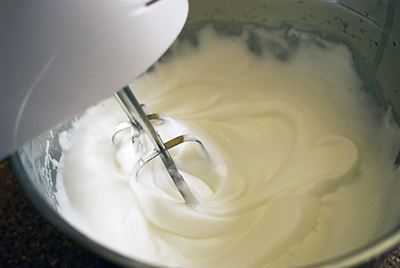
(Soon as you can make strokes in the whites, put the last lot of sugar in.)
.
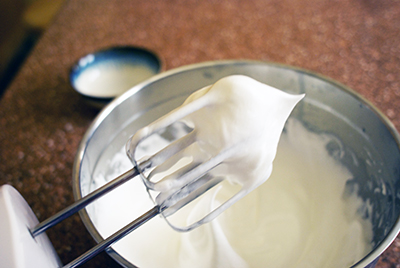

.

.

(Soon as you can make strokes in the whites, put the last lot of sugar in.)
.

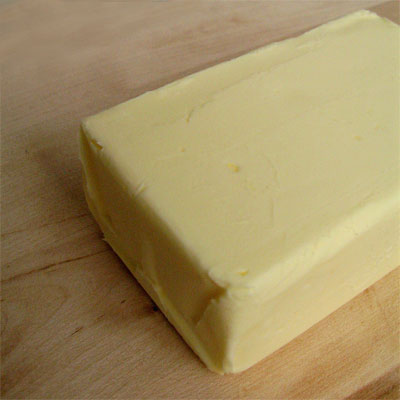
.
So far in previous posts I have written facts & tips on how to use the essential baking ingredients: flour, eggs & sugar. This week is about Butter. Just like the others, knowing how best to work with butter is vital for successful happy baking!
.
What is butter?
Butter is essentially the concentrated fat of the milk with some water. It is made from milk, cream or both of these ingredients. Commercial butter may even be made from whey which is taken during the cheese making process. The colour of the butter varies from dark yellow to creamy white – this is due to what the animal’s are fed on, or is sometimes manipulated with food colourings. The basics of butter making is simple – they produce it by churning the milk/ cream until the fats separate from the liquid (buttermilk).
.
What is the best way to store butter?
Make sure it is properly sealed in its foil packaging to avoid it turning rancid from exposure to air, & away from smelly foods as it readily picks up odour. The best way to defrost is to place the required amount in the fridge for 6 hours – never leave it in room temperature as it’ll end up with water droplets sweating out of it.
.
How soft is room temperature butter? How do I achieve it?
You can tell wether you’ve achieved ‘Room temperature butter’ when the softness allows you to ‘easily’ depress the surface with your finger, at the same time not melting.
To obtain it, all you have to do is to leave the quantity of butter your recipe requires (still in its packaging) out in the room for 30 minutes. – I never have the time nor patience to do that (or indeed remember to take it out in advance), so I just cube my block of butter straight from the fridge & zap it in the microwave at 10 second intervals at first & then careful 5 second gaps until the right consistency is reached. Easy peasy.
.
How do I cream butter? And Why?
To cream butter, first start off with cubed butter that has been softened to room temperature. Place in a deep mixing bowl (so that it doesn’t spit everywhere) & using the mixer, beat it till it is ‘creamy’, soft, smooth & light from incorporating the air. Use immediately.
Typically, many sponge recipes require you to whip the butter to a cream texture before you add the sugar. Once sugar is added to correctly creamed butter, it has incorporated the air in to it which would then cause a foaming action in sponge cakes. (when the cake batter is in the oven, the incorporated air is like a bubble, trapped, & it eventually ‘sets’, leaving tiny holes in your soft sponge).
.
Why do baking recipes call for ”unsalted’ butter’?
Salted butter is tasty for spreading on your morning toast, & its shelf-life is a lot longer than unsalted. But for baking, the taste of salt gets in the way, & besides, salted butter browns faster. So even if a baking recipe such as madelaines, pies, and buttercakes call for salt, you’d use unsalted butter and then sprinkle in the salt separately to control its saltness.
.
How do I make home-made butter?
Please follow this link for an online recipe I found.
.
Health facts:
One tablespoon of butter (14 grams) contains 100 calories, of which 7 grams are saturated fat, and 30 milligrams of cholesterol. In other words, butter consists mostly of saturated fat and is a significant source of dietary cholesterol. For these reasons, butter has been generally considered to be a contributor to health problems, especially heart disease.
Also, people with milk allergy need to watch out.
.
Can I substitute butter with margarine?
In principle yes – they are both fats. But if you are doing it for health-conscious reasons, you’d have to be aware that there are loop-holes. Some margarine contain trans fats (the main dietary culprit in raising blood cholesterol) so please read the back carefully. The water content is slightly different between the two, & because of this, the careful balance of the recipe will be mucked about & the result will not be perfect. Also the melt point is different (butter melts at body temperature, while margarine melts at higher than 98.6 degrees) which can only get you further away from what the recipe had originally been planned to do.
I personally never will substitute my butter. Margarine lacks flavour & is greasy on the palate. Butter is a natural ingredient, & is in these baking recipes for a purpose, for such examples as giving a rich buttery flavour & to enhance the other ingredients.
.
x x x x x x x x x x x x x x x x x x x x x x
This week:
After last Saturday’s successful return to the market after my 1 month break, I’ve cranked up my energy & work-volume to Max & am buzier than ever with making n’ baking!
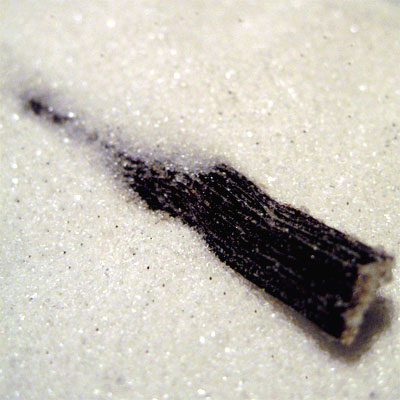
(Home made vanilla sugar)
.
Sugar is a staple in everyones kitchen, & is used extensively in confectionery. Obviously it is sweet, but it’s more than that – it provides moisture, tenderness, enhances other flavours, provides stability in meringues, can caramelize, can even be bitter & increases shelf-life (A good example is jam. High percentage of sugar prolongs shelf life as it inhibits the bacteria to grow). But did you know that there are dozens of varieties of it available? It’s a minefield. It can be mystifyingly confusing… Before my obsession with baking I don’t think I ever used anything other than white refined granulated sugar!
.
So here is a list of some of the sugars. I think it’ll help understand why your recipe is calling for a particular type, & have confidence in switching it when you want to have a more caramelly flavour for example:
All of the above can be substituted with each other in principal. They come from the same stage of sugar process, & some are just that they are various crystal sizes depending on what you’d like to use it for.
The confusing part is… some of these can come as refined (bleached, refined white sugar which is pure sucrose/ carbohydrate), partly refined, or unrefined (typically 50% less processed than refined. It retains some of the natural properties, making it wholesome & healthy). It could be under naming such as ‘natural’ or some brands call theirs differently. You really have to study the package before purchase.
The following are the natural sweeteners:
And then for sweetening the chocolate ganache:
.
History:
Sweet tasting liquid from the Sugar cane (a tropical grass) was first discovered on the islands of the Pacific Ocean some 20,00 years ago (!) but the process of making sugar by evaporating its juice developed in India around 500 BC. It is from then on that the technology for sugar production slowly spread around the world, although for many hundreds of years, sugar was a highly prized and expensive ‘spice’ that was used only in the homes of nobility and royalty, just like the history of chocolate.
.
I recently came across the most insightful historic literature of how sugar was refined & then manufactured into loaf sugar back in 1876 London (loaf sugar was refined white sugar moulded into cone-shaped loaves – which then got cut up either by the retailer or at home using a cleaver & then pounded to powder). I love the way it’s written. Its not just an account of what it was like, but more like a good novel. It describes one of the workers as a creature with chest all grizzly-haired, calls it the ‘Sugar Ogre’ in waiting for juvenile delinquents. – It’s a bit long, but persist. I found that it was worth reading.
.
x x x x x x x x x x x x x x x x x x x x x x x x x x x
.
Home-made Vanilla Sugar Recipe:
Vanilla sugar is simply castor sugar with vanilla. There are no set rules of how to make it. If you want, you can change the ratio of sugar/ vanilla according to wether you’d like the aroma to be intense or subtle. And you can keep replenishing more sugar in to the same jar & the pod would sufficiently flavour the sugar.
.
Ingredients:
200g Granulated or castor sugar (any amount is okay – it just lessens or increases the aroma of vanilla, thats all)
1 x Fresh or used vanilla pod (There are two ways to go about it. To use pod skin & seeds, or just pod skin after you’ve used the seeds for other baking requirements)
Container with tightly fitting lid (I find it is pretty when white sugar has dark specks of pure vanilla seeds, so I recommend a clear glass jar!)
.
1. Chop the vanilla pod – for example, in half. If you’re using fresh pods, de-seed & then chop.
2. Place both sugar & vanilla pod (& seeds) in the jar & mix well, distributing the vanilla beans in the sugar.
3. Tightly seal with lid & store in a cool place. The sugar would be gorgeously scented in 1 to 2 weeks. It will keep indefinately without refrigeration.
.
Uses:
Use the vanilla sugar in baked goods & desserts that calls for both sugar & vanilla. Or sprinkle over home-made sponge cakes, biscuits, fresh fruit, custards, crème brûlée, crumbles, favourite breakfast cereal, hot coffee, milkshakes, yoghurt, buttered toast etc.
.
x x x x x x x x x x x x x x x x x x x x x x x x x x x
.
This week:
I have been busy in the evenings making Chocolate Valentines Hearts for the oh-so-busy Valentine season that’s creeping it’s way.
And my son has started nursery on Wednesday! A milestone. A bit of a tear jerker. It’s 1pm til 3.30pm, Monday to Friday. You’d think that it’ll give me more me-time, but it takes me 30 minutes to walk there, so by the time I walk him & go back home, it’ll only give me 1½ hours at home before I go & pick him up…!
Please Note:
I AM NOT AT THE MARKET NEXT SATURDAY 16TH. HOLIDAYING IN HAMBURG. I WILL BE BACK WITH MANY MANY CHOCOLATES N’ CAKES ON SATURDAY 23RD!
.
This week’s entry is about flour.
Flour is the pillar of cakes & also the thickener of creams such as Crème Pâtissière. The most common flour you’d see at the supermarket is made from wheat. But flour can also be made from maize/ corn, barley, rye, rice, chestnut, chickpea, buckwheat. For pastry baking, the wheat kind is mostly used. – Never substitute the type of flour & expect the same recipe to work, as different flour types produce different amount of gluten.
.
Without sounding atall scientific (which I’m not so clued up on anyway), I must write about the importance of gluten. It is responsible of the quality of your cake’s turnout.
– The protein in the flour turns in to gluten when you add the ‘liquids’. During oven baking, the whisked egg whites would rise the cake, & the gluten from the flour would become the pillar to keep the cake in that risen shape. The correct amount of oven-heat would make this pillar solid & the cake will not deflate when it comes out.
– One in every 1000 to 1500 people (in UK) have gluten intolerance known as coeliac/ celiac disease. It is an auto-immune disease, when the body produces antibodies that attack its own tissues. Symptoms can be mild to severe, usually bloating, nausea, hair loss, depression, bowel problems, & even infertility. – Since I have started this stall I have come across so many customers looking for gluten-free cakes. The only gluten-free cake is the ‘Moist Flourless Chocolate Cake’ made with just chocolate, eggs, sugar & orange liquer. And even that, I make sure I point out to them that I cook with flour in the same kitchen & that there may be traces of flour in it. Just like what a packet might say about nuts! The thought of people getting ill over my stuff is ruinous…
.
Do: always sift the flour – even if the packet says ready-sifted. It not only removes clogged up balls of flour (which will remain as flour balls in your baked cakes), importantly, it introduces ‘air’ in to the flour. It’ll be quicker to mix in the flour & successfully too. Some recipes might ask you to sift twice.
.
Do: always measure flour after sifting.
.
Do: store flour on a cool, dry, shelf in its bag or in an airtight container. Apparently, damp & warm conditions would invite little insects called ‘confused flour beetles’ & ‘red beetles’ to hatch in it. (As one of my Kid’s friend says, that’s just ‘yucky yuck’). So, never mix new flour with old. White flour generally keep well for 6 to 9 months.
.
Do: mix the flour using the ‘folding’ technique; rotate the bowl with your left hand, dig your spatula to the bottom & lift it up in big movements, like you are cutting the mixture from the bottom. Keep rotating & cutting & stop when the white flour dissapears.
.
Don’t: over-mix your cake dough – unless the recipe tells you to. Over-mixing would stregthen the gluten structure. You’d end up with a tough & dense sponge where the gluten had squashed the bubbles.
.
Last Saturday:
… was a struggle. Every stall holder I’ve talked to was complaining about how there hadn’t been many spending customers. We realized that maybe it’s because it’s a run up to Christmas & people are holding on to their purse until the party season kick starts (hopefully from next Saturday please!). – Although the chocolate truffles (currently doing five types) goes down really well nowadays, & it got sold out quite quickly. I think it is because of the chocolate boxes I started using (pictured below), which costs £1.10 per box. It has a faux canvas texture, & the box is rigid. It’s a type of box you might want to keep, & it goes well with the ‘chocolate = luxury’ theory. – Before these boxes, I have been using self-assembly flat pack boxes made out of white glossy card which cost around 42 pence per box. Huge difference in cost I know, but the difference in quality is so crystal clear, I’ll never go back to those flimsy cheapo flat packs. I’m so happy I found these boxes, it makes me want to roll more truffles…!
.
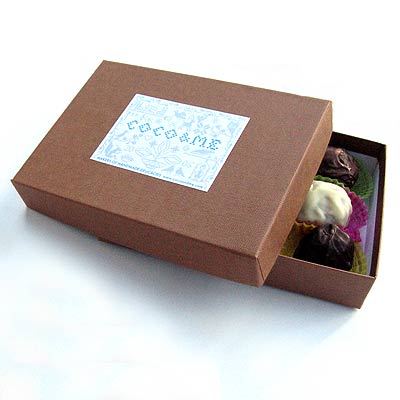

.
Last Saturday:
I have been slightly unwell all week & tired, so I made considerably less. No Tarte Tatins, Chocolate Tarts & no Gateaux Basques, & generally less quantities of everything. Actually I was thinking of not trading atall. But the customers would not trust me if I was unreliable. Next time they need a cake or some chocolates, they would not bother checking my stall out & buy elsewhere, right?
– Making less turned out to be a good decision anyway, as formidable amount of rain bucketed down until lunch time, & business was slow.
.
This week’s entry is about eggs.
Prior to any cake recipes added to this blog, I’d like to throw in my two cents’ worth on the subject of basic ingredients such as eggs, butter, flour & sugar. The reason being… Before attempts are made at baking, it’s best to have knowledge of the ingredients & know how to handle them to get a good result. There is nothing more irritating than ending up with a bad turn out & not knowing why it happened (or blame me for it!).
So lets start with the subject of ‘eggs’:
.
When I was new to all this baking, I had a hard time figuring out how best to beat the egg whites. I was full of questions such as ‘exactly at what timing do you incorporate the sugar?’. It’s plain obvious that correctly whipped egg whites are the core to any successful foam based cake. Getting it right is essential.
.
How to whip or beat egg whites:
1. Put aside the precisely measured sugar ready in another bowl.
2. Get a squeaky clean bowl & whisk. Any traces of grease would prevent the egg whites from foaming well. (Also, don’t use plastic bowls. They can harbour traces of grease. Instead use glass or stainless steel)
3. Crack the egg whites in to the bowl. Make sure there aren’t any trace of egg yolk. Yolk contains fat & it’ll prevent the egg whites from foaming well.
4. Start whisking the egg whites on medium speed.
5. Once the liquid has turned to foam (a cross between bubble-bath & a cappucino froth), pour 1/3 of your sugar from the side of the bowl. Turn the speed to High.
6. When the foam becomes finer, & you see fluffy peaks forming (like Summer clouds), add the second 1/3 of the sugar.
7. The last 1/3 should be incorporated when: the foam is shiny, you start to feel the resistence, & see defining peaks.
8. Just before you finish, rotate the whisk slowly around the bowl – this makes sure that all the foam is of equal size.
9. Fold in the foam to the cake batter straight away. It is deflating as we speak…

© Coco&Me 2025 – All writing & pictures remain the property of Coco&Me & cannot be used without permission